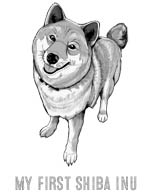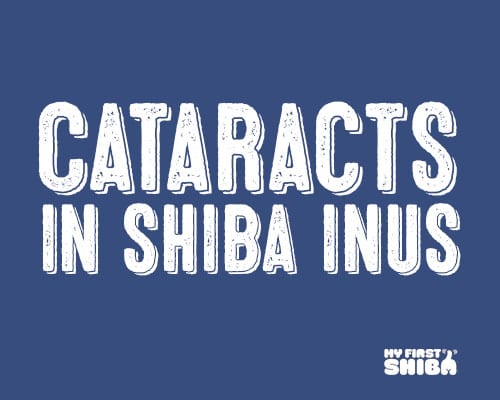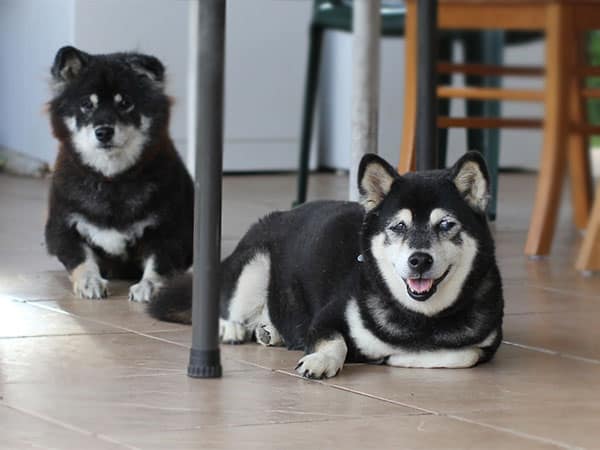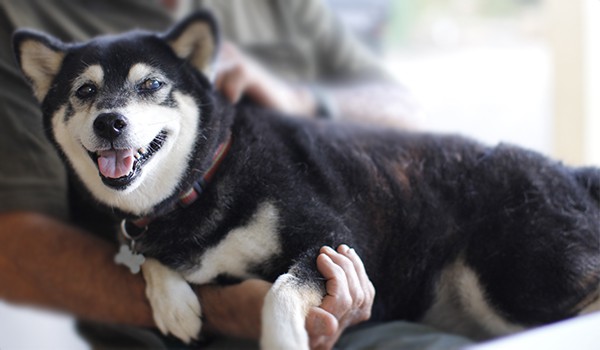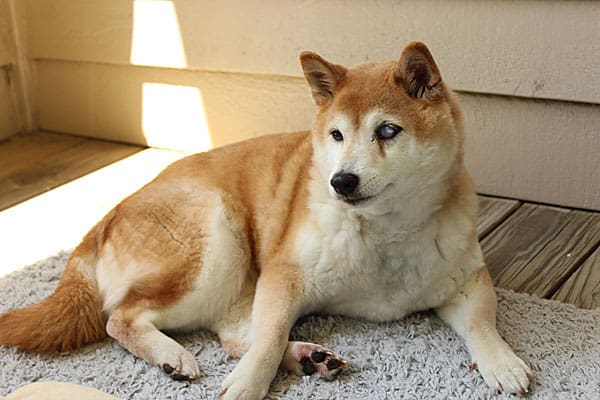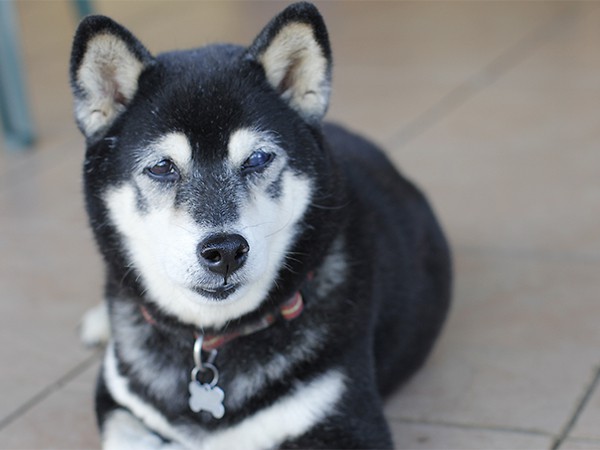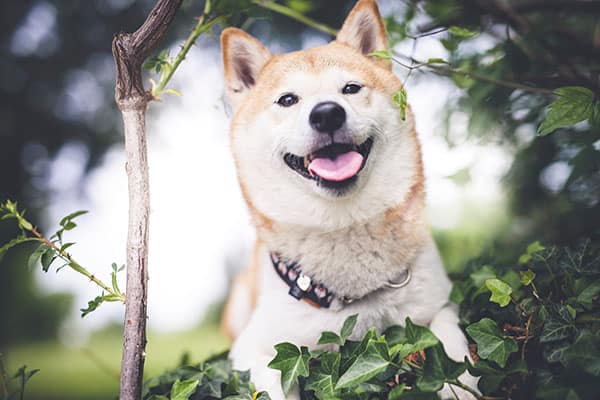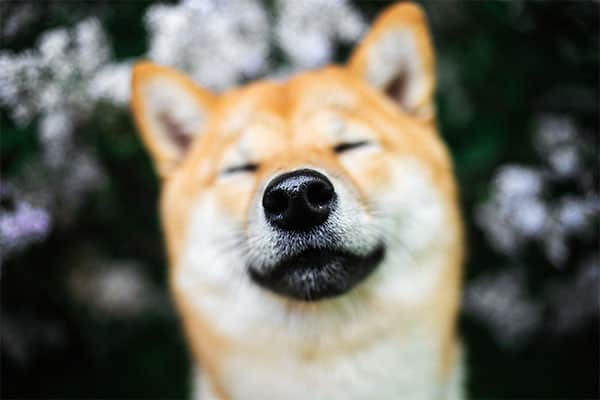On occasion, our posts contain affiliate links. However, we only recommend products that we truly believe in. For more information, visit my privacy policy page.
Author: Liza Cahn, DVM
Pet parents of Shiba Inus are intimately familiar with the breed’s spirited demeanor, keen expression, and bright fox-like eyes.
So if you notice changes to your dog’s eyes or vision, it can extremely be concerning.
One possible cause of cloudy eyes and vision loss is cataracts.
As Shiba enthusiasts, pet parents, and breeders, it’s essential to be aware of early signs of cataracts, implications of the condition, and available treatment options.
Chu Chu, my 11-year-old black and tan Shiba Inu with cataracts
What Are Cataracts in Dogs and Are Shiba Inus Prone to Them?
A cataract is an opacity (cloudiness) in the lens of the eye.
A normal lens is transparent (clear) and serves to focus light onto the retina at the back of the eye, where vision occurs.
The lens consists primarily of proteins.
For various reasons, these proteins can clump together, forming a cataract. When light cannot easily pass through the lens, it leads to decreased vision or blindness.
Cataracts can be classified based on several factors, including age of onset, location, cause, and level of maturity. Additionally, one of both eyes may be affected.
- Incipient Cataract: Only a small portion of the lens is affected (<15%), and there is no vision loss.
- Immature Cataract: More of the lens becomes clouded, but vision deficits are typically still minimal.
- Mature Cataract: The entire lens is clouded, leading to significant visual impairment or blindness.
- Hypermature Cataract: The lens begins to shrink and wrinkle, vision remains severely compromised, and lens-induced uveitis (inflammation) occurs.
- Cataracts may also be described as congenital (present at birth), juvenile (occurring in young animals), and senile (occurring in older animals).
Shiba Inus are at slightly higher risk than some other dog breeds for developing several eye conditions, including cataracts, glaucoma, and progressive retinal atrophy.
This doesn’t mean every Shiba Inu will develop them, but it does suggest that pet parents should be particularly vigilant about their Shiba’s eye health.
Chu Chu’s cataracts are worse in one eye
What Causes Cataracts in Shiba Inus?
Several factors and conditions can contribute to the formation of cataracts, including:
-
Old age
-
Genetics: Certain breeds or familial lines of animals are predisposed to developing cataracts, suggesting a hereditary component. In dogs, for instance, breeds like Cocker Spaniels, Miniature Poodles, and Siberian Huskies have a higher genetic predisposition to cataracts.
-
Diabetes Mellitus: In diabetic animals, excess glucose in the blood lead to changes within the lens of the eye. Diabetic cataracts generally develop rapidly and often affect both eyes – in fact, 75% of diabetic dogs develop cataracts within 6-12 months.
-
Trauma: Direct injury to the eye, whether from blunt force, a puncture, toxin exposure, electric shock, or intense radiation (like UV light), can damage the lens and lead to cataract formation.
-
Inflammation: Chronic or severe inflammation inside the eye (uveitis) can induce changes in the lens, leading to cataract development.
Nutritional Deficiencies: Rarely, deficiencies in nutrients during certain developmental stages can lead to cataract formation.
Can Cataracts Cause Blindness in My Shiba Inu?
Cataracts can eventually lead to permanent blindness.
The lens inside the eye is responsible for focusing light onto the retina, which then sends visual information to the brain via the optic nerve.
A cataract disrupts this process by clouding the lens.
As the cataract progresses, less light can reach the retina, leading to deteriorating vision.
While small cataracts, or those affecting only one eye, may not result in vision loss, others can cause decreased vision or complete blindness.
Noticeable vision loss generally occurs when a cataract involves 60% or more of the lens.
Untreated cataracts can also lead to other complications that exacerbate vision loss.
One of the most concerning complications is lens-induced uveitis, where the body’s immune response to proteins leaking from the lens causes inflammation in the eye.
If left untreated, this inflammation can lead to glaucoma (buildup of pressure within the eye), lens luxation (displacement of the lens), or other severe conditions that can cause pain and further vision loss.
Sypmtoms of Cataracts in Dogs
Shiba Inu owners should be aware of potential signs of cataracts, including:
-
Cloudiness or bluish-gray appearance in the eye(s)
-
Squinting or difficulty seeing in varied lighting conditions (often worse in dim light)
-
Excessive tearing or discharge from the eyes
-
Bumping into objects or seeming disoriented, especially in unfamiliar environments
-
If cataracts are due to diabetes, you may also notice increased thirst and urination and weight loss despite a normal or increased appetite.
What Else Can Cause Cloudy Eyes in Shibas?
Cloudy eyes in Shibas can be due to a range of underlying conditions.
Nuclear sclerosis, for example, is an age-related change that results in a denser lens, giving it a slightly cloudy appearance.
This condition is often mistaken for cataracts in older dogs, but it is actually a normal aging change that does not affect vision or require treatment.
The cornea, the eye’s outermost layer, can be the site of several conditions causing cloudiness (such as ulcers, scarring, or fatty deposits).
Glaucoma, characterized by increased pressures in the eye, can lead to a cloudy appearance and is notorious for causing significant pain and vision loss.
Additionally, uveitis (inflammation within the eye) can make the eye look hazy or cloudy.
If you notice a change in the appearance of your dog’s eyes, it’s important to have them evaluated by your vet as soon as possible.
While some causes of cloudy eyes are minor, others can lead to pain and complications, such as vision loss, if not evaluated and treated promptly.
How Veterinarians Diagnose Cataracts
If you see your vet with a concern about cataracts or cloudy eyes, they will start by getting a detailed medical history and performing a nose-to-tail physical exam.
They will likely recommend several eye tests to help rule out other possible causes, including:
- Detailed Ophthalmic Examination: In addition to examining your dog’s eyes, your vet may use tools like a slit-lamp biomicroscope to closely examine the lens for signs of opacity.
- Fluorescein Staining: A small amount of bright green stain is applied to the eye to check for corneal ulcers.
- Tonometry: To rule out glaucoma, which can sometimes coexist with cataracts or develop as a complication, your vet will use a tool to measure the pressure in your dog’s eyes.
- Schirmer Tear Test: Measures tear production and is used to diagnose dry eye.
- Bloodwork: To evaluate major organ function and overall systemic health, as well as help diagnose medical conditions such as diabetes.
- Referral to ophthalmologist: A veterinary ophthalmologist can help diagnose and treat cataracts. When you are referred to an ophthalmologist will depend on your vet’s experience and comfort level with cataracts.
Electroretinography (ERG): This test might be done prior to cataract surgery to ensure that the retina is functioning correctly.
This is crucial because removing a cataract from an eye with a non-functional retina won’t restore vision.
Kitsune and Chu Chu in their younger days
Treatment Options for Shiba Inus With Cataracts
The goal of treating cataracts is to restore vision and prevent associated complications.
The only treatment available to restore vision is surgery with a veterinary ophthalmologist.
Prior to surgery, testing must be done to determine the health of the retina and make sure your dog is a good candidate. The long-term success rate after surgery is approximately 80-90%.
- Phacoemulsification: This is the most common and advanced surgical technique for cataract removal in dogs. It involves using sound waves to break up the cloudy lens, which is then sucked out of the eye. Often, an artificial intraocular lens is implanted to replace the natural lens, providing the dog with better postoperative vision.
- Lens Extraction: A more traditional surgical method, this involves a larger incision through which the lens is removed.
- Medications: Anti-inflammatory and antibiotic eye drops are used before and after cataract surgery to reduce inflammation and prevent infection. Unfortunately, there are not currently any medications available to resolve cataracts or delay their progression.
In cases where surgery isn’t an option or the cataract isn’t severely affecting your dog, veterinarians might recommend monitoring the cataract for progression and managing any associated inflammation or discomfort with medications.
Many dogs can live happy and healthy lives with cataracts (even if they lose their vision) as long as their eyes are not painful!
It’s important to have a candid discussion with your ophthalmologist to determine if surgery is the right choice for you and your dog.
Costs To Treat Canine Cataracts
A visit to a veterinary ophthalmologist for an initial examination typically costs $200 to $300, depending on the region.
The cost for phacoemulsification often ranges between $2,500 and $4,500 per eye.
This fee generally includes the pre-operative assessment, the surgery itself, anesthesia, medications, and some follow-up appointments.
Can Cataracts in Dogs Be Prevented
In most cases, especially if there is a genetic component, cataracts cannot be prevented.
Feeding your pup a high-quality diet, doing your best to avoid trauma and UV exposure to the eyes, and keeping up to date on wellness exams with your vet, can help promote eye health and catch problems early.
Breeders also have an important role in cataract prevention and should screen potential breeding dogs for known hereditary cataract genes and early signs of the condition.
Cataracts in Shibas FAQ
Are Cataracts Painful?
Cataracts themselves are not painful; however, they can lead to complications (such as glaucoma), which are painful.
It’s essential to monitor animals with cataracts closely for any signs of discomfort or changes in behavior, as these might indicate secondary conditions that require immediate veterinary attention.
How Long Can a Dog Have Cataracts Before They Go Blind?
Vision loss will depend on how much of the lens is affected. Incipient cataracts, or those affecting only one eye, may not lead to vision loss.
Whether or not a cataract progresses will also vary on an individual basis.
For example, diabetic cataracts often develop very quickly. In many cases, cataract surgery can restore vision.
If your dog does become blind, they can still live a happy and healthy life, as long as their eyes are not painful. Here are some tips on caring for a blind dog.
What Do Dogs With Cataracts See? Do They See Better in the Dark or Light?
As the cataract progresses and becomes more mature, it covers more of the lens, leading to greater visual impairment.
A dog might see the world as if looking through a frosted glass—shapes and light can be discerned, but details are obscured. Vision may be worse in dim light.
Is It Worth It To Treat Old Dogs With Cataracts?
This is a personal choice that should be made on an individual basis under the guidance of your veterinarian.
The goals of treatment are to help your pet regain eyesight and avoid secondary complications associated with cataracts.
Considerations include the severity of the cataracts, the underlying cause, and any other medical conditions that your senior pet may have that could put them at higher risk for surgery and anesthesia.
How Can You Tell The Difference Between Cataracts and Glaucoma in Dogs?
Cataracts and glaucoma are distinct eye conditions that can both lead to blindness in dogs.
Cataracts manifest as a cloudiness in the lens, leading to progressive vision loss, but are not painful.
In contrast, glaucoma involves increased intraocular pressure, causing a potentially enlarged, hazy, or bluish eye, and is often extremely painful.
Any eye issue should be evaluated by a veterinarian as soon as possible.
Finding an Ethical Shiba Inu Breeder in California
Thanks for visiting Myfirstshiba.com! We do our very best in providing our readers with awesome content about our beloved Shiba Inu breed. Some of our articles include reviews and recommendations to our favorite products. We do occasionally earn commissions from certain affiliate links that help support our work and mission. Thanks again for visiting. Shiba Kisses To All!
